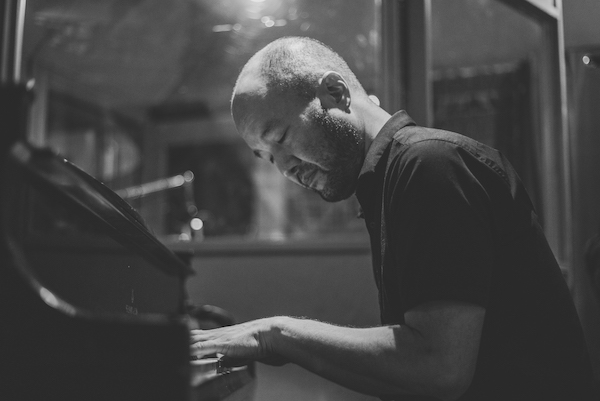Oct 28, 2025 10:47 AM
In Memoriam: Jack DeJohnette, 1942–2025
Jack DeJohnette, a bold and resourceful drummer and NEA Jazz Master who forged a unique vocabulary on the kit over his…

Art Hirahara’s latest album, Balance Point, includes original compositions and one Duke Ellington tune.
(Photo: Sara Pettinella)Visiting his native San Francisco in mid-March to play some dates and see his mother, Art Hirahara suddenly found himself under a shelter-in-place order while the coronavirus raged through California. By the time the pianist was able to ensure his 84-year-old mother’s safety and return to New York City, he was out of work.
“Everything is basically at a standstill,” Hirahara said in from his Brooklyn home. The pandemic caused Hirahara to miss shows as an accompanist for singer Stacey Kent, but he still found a way to work with her: On May 25, Kent posted a video of a gorgeous duo rendition of Stevie Nicks’ “Landslide,” featuring her vocals and Hirahara’s electric piano—each recorded separately in their respective homes.
“Playing with people is the most important thing to me, and not playing with people is torture,” Hirahara said.
Look no further than Balance Point (Posi-Tone), Hirahara’s latest album, for a demonstration of how collaboration fuels his music. The lustrous post-bop program matches him with two longtime colleagues, bassist Joe Martin and drummer Rudy Royston, as well as a new acquaintance: tenor saxophonist Melissa Aldana.
“I was just hanging out at Smalls one night when I heard her,” he said. “I thought, ‘Wow. This musician is fully formed, and worldly, and has a deep perspective on music and on life.’ I knew I wanted to work with Melissa.”
He suspected, correctly, that they would quickly establish a rapport. “For someone I had never had the chance to play with before, it felt very natural,” Aldana said of Hirahara. “His compositions are very beautiful, and they make sense. I really love his comping: To be able to make the whole band and the soloists feel and sound better, it’s not something you can practice, but it’s a big part of maturity as a musician.”
Along with its original compositions and Duke Ellington’s “Prelude To A Kiss,” the album includes two free improvs, “A Fine Line Between” and “Fulcrum,” by the trio (minus Aldana).
“Those [improvised tracks] are included to show our conversational interaction and sensitivity,” Hirahara said. “How we can interact without planning, how can we respond and react to one another in an eloquent, spontaneous way?”
Hirahara began playing piano at 4, working with a classical teacher named Sue Shannon, who encouraged him to improvise. She also taught him electronic music, which was his major when he arrived at Oberlin Conservatory of Music. It was only then that he began to take an interest in jazz, convincing piano legend Neal Creque, who taught at Oberlin, to take him on as a student.
After a few years back in the Bay, Hirahara felt the pull of New York and moved there in 2003 to take advantage of the city’s myriad opportunities. Until live performances fully return, Hirahara has been pondering his future plans.
“I’ve had this idea of doing an electronic record,” he said. “And have input and collaboration from other musicians. If we’re all holed up in our rooms, maybe I can send them something and they can fire something back at me, and we can have a collaboration that way.”
Jazz is, after all, about responding to the moment. DB
This story originally was published in the August 2020 issue of DownBeat. Subscribe here.

Jack DeJohnette boasted a musical resume that was as long as it was fearsome.
Oct 28, 2025 10:47 AM
Jack DeJohnette, a bold and resourceful drummer and NEA Jazz Master who forged a unique vocabulary on the kit over his…

Goodwin was one of the most acclaimed, successful and influential jazz musicians of his generation.
Dec 9, 2025 12:28 PM
Gordon Goodwin, an award-winning saxophonist, pianist, bandleader, composer and arranger, died Dec. 8 in Los Angeles.…

Nov 13, 2025 10:00 AM
For results of DownBeat’s 90th Annual Readers Poll, complete with feature articles from our December 2025 issue,…

Flea has returned to his first instrument — the trumpet — and assembled a dream band of jazz musicians to record a new album.
Dec 2, 2025 2:01 AM
After a nearly five-decade career as one of his generation’s defining rock bassists, Flea has returned to his first…

To see the complete list of nominations for the 2026 Grammy Awards, go to grammy.com.
Nov 11, 2025 12:35 PM
The nominations for the 2026 Grammy Awards are in, with plenty to smile about for the worlds of jazz, blues and beyond.…








